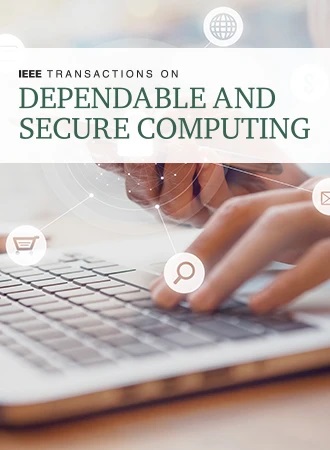Detecting Adversarial Examples on Deep Neural Networks with Mutual Information Neural Estimation
IF 7.5
2区 计算机科学
Q1 COMPUTER SCIENCE, HARDWARE & ARCHITECTURE
IEEE Transactions on Dependable and Secure Computing
Pub Date : 2023-11-01
DOI:10.1109/tdsc.2023.3241428
引用次数: 0
Abstract
Despite achieving exceptional performance, deep neural networks (DNNs) suffer from the harassment caused by adversarial examples, which are produced by corrupting clean examples with tiny perturbations. Many powerful defense methods have been presented such as training data augmentation and input reconstruction which, however, usually rely on the prior knowledge of the targeted models or attacks. In this paper, we propose a novel approach for detecting adversarial images, which can protect any pre-trained DNN classifiers and resist an endless stream of new attacks. Specifically, we first adopt a dual autoencoder to project images to a latent space. The dual autoencoder uses the self-supervised learning to ensure that small modifications to samples do not significantly alter their latent representations. Next, the mutual information neural estimation is utilized to enhance the discrimination of the latent representations. We then leverage the prior distribution matching to regularize the latent representations. To easily compare the representations of examples in the two spaces, and not rely on the prior knowledge of the targeted model, a simple fully connected neural network is used to embed the learned representations into an eigenspace, which is consistent with the output eigenspace of the targeted model. Through the distribution similarity of an input example in the two eigenspaces, we can judge whether the input example is adversarial or not. Extensive experiments on MNIST, CIFAR-10, and ImageNet show that the proposed method has superior defense performance and transferability than state-of-the-arts.基于互信息神经估计的深度神经网络对抗样本检测
本文章由计算机程序翻译,如有差异,请以英文原文为准。
求助全文
约1分钟内获得全文
求助全文
来源期刊

IEEE Transactions on Dependable and Secure Computing
工程技术-计算机:软件工程
CiteScore
11.20
自引率
5.50%
发文量
354
审稿时长
9 months
期刊介绍:
The "IEEE Transactions on Dependable and Secure Computing (TDSC)" is a prestigious journal that publishes high-quality, peer-reviewed research in the field of computer science, specifically targeting the development of dependable and secure computing systems and networks. This journal is dedicated to exploring the fundamental principles, methodologies, and mechanisms that enable the design, modeling, and evaluation of systems that meet the required levels of reliability, security, and performance.
The scope of TDSC includes research on measurement, modeling, and simulation techniques that contribute to the understanding and improvement of system performance under various constraints. It also covers the foundations necessary for the joint evaluation, verification, and design of systems that balance performance, security, and dependability.
By publishing archival research results, TDSC aims to provide a valuable resource for researchers, engineers, and practitioners working in the areas of cybersecurity, fault tolerance, and system reliability. The journal's focus on cutting-edge research ensures that it remains at the forefront of advancements in the field, promoting the development of technologies that are critical for the functioning of modern, complex systems.
 求助内容:
求助内容: 应助结果提醒方式:
应助结果提醒方式:


